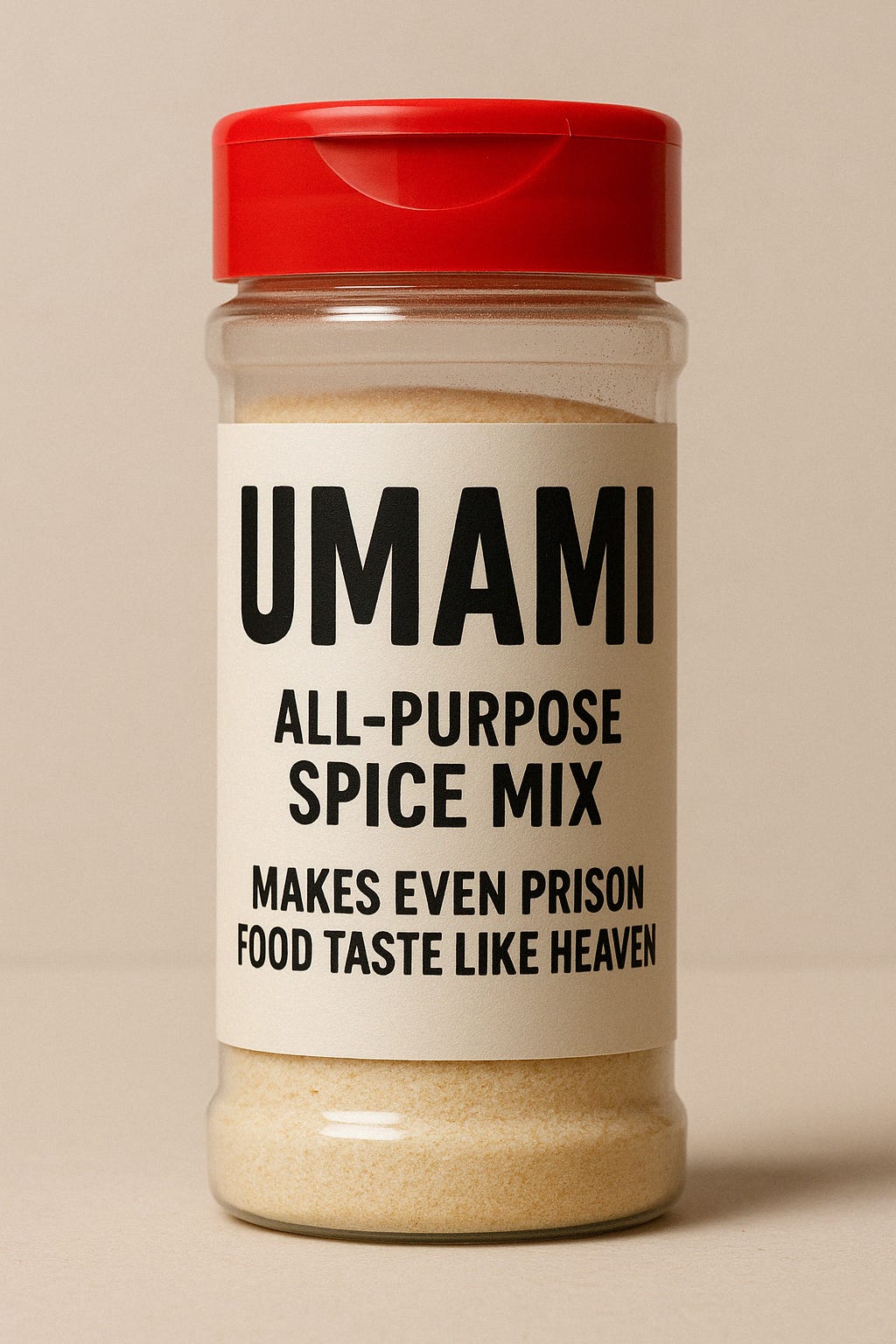Once upon an ancient time, food had four tastes: sweet, salty, sour, and bitter. It was a simpler era—steak tasted like steak, tomatoes like tomatoes, and nobody tried to elevate instant noodles by calling them a “celebration of umami.” But then came the rise of a fifth taste, the elusive umami, and everything changed.
Suddenly, umami was everywhere. No dish could be properly described without invoking it. Parmesan? Umami bomb. Soy sauce? The essence of umami. Mushrooms? They scream umami, darling. It’s as if food critics and influencers discovered a magic word that instantly made their descriptions sound more refined. But here’s the thing: it didn’t make them smarter. It just made them louder.
The Myth of the Mysterious Fifth Taste
Let’s get one thing straight—umami isn’t new. Japanese scientist Kikunae Ikeda identified it over a century ago in 1908, after studying the savory depth of dashi broth made from kombu. He isolated glutamic acid as the compound responsible, and thus the “fifth taste” was born. But what began as a legitimate scientific breakthrough has since been co-opted by a certain crowd who like their food writing with a side of self-importance.
These days, people wield the word umami like a chef’s knife at a dinner party, hoping it will slice through their guests’ perceived ignorance. “Oh, you don’t taste the umami in this anchovy-laced butter? It’s sublime—it just lingers on the back of your tongue.” Translation: I read one Bon Appétit article and now I think I’m Harold McGee.
You Keep Using That Word…
Here’s a fun challenge: next time someone says umami, ask them to describe it. Watch the panic behind their eyes. Most will give you some vague combination of “savory,” “meaty,” or “like soy sauce, but not.” It’s the culinary equivalent of someone insisting they love modern art but can’t name a single painter post-Warhol.
Yes, umami is real. Yes, it adds depth and roundness to food. No, it is not a free pass to sound cultured. Throwing around the term without understanding it is like calling every sparkling wine “Champagne.” Technically, you might impress a few, but anyone who knows what they’re talking about is quietly judging you.
MSG: The Original Umami Villain
Let’s also talk about the hypocrisy of the umami elite. The same people who sneer at processed food will wax poetic about umami-rich ramen—then recoil in horror at the mention of monosodium glutamate. Never mind that MSG is literally the concentrated form of umami. Never mind that it’s been proven safe repeatedly. No, it must be “natural” umami or nothing. Preferably extracted by a monk in Kyoto and stirred with a bamboo paddle while chanting.
This fear of MSG is a holdover from a now-debunked panic known as “Chinese Restaurant Syndrome,” which—spoiler alert—was rooted in racism more than science. But hey, sprinkle some truffle salt on it and call it “artisanal glutamate” and we’re back in business.
The Umami Checklist
In case you were wondering, here’s a non-exhaustive list of things people now claim are umami-rich: aged cheeses, cured meats, tomatoes (especially sun-dried, of course), seaweed, soy sauce, miso, anchovies, mushrooms, fish sauce, green tea, slow-roasted onions, and apparently their own egos.
It’s almost comical how everything has become umami if you just believe hard enough. Is your soup bland? Add more umami. Is your restaurant not getting good reviews? Tell the critic your flavor profile leans heavily on umami and they’ll probably nod approvingly, too embarrassed to admit they don’t know what you mean.
A Taste of Humility
There’s nothing wrong with appreciating depth in flavor. But let’s retire the umami name-dropping unless you actually know what you’re talking about. It’s a taste, not a religion. You don’t need to chant it before meals or offer burnt offerings to the god of kombu. Sometimes, your pasta sauce just tastes good because it has garlic, salt, and tomatoes—not because it’s some transcendental umami experience.
At the end of the day, food is meant to be eaten, not intellectualized into oblivion. So next time someone at the table calls their cheeseburger “a rich interplay of umami-forward elements,” do us all a favor—take a bite, chew slowly, and remind them: it’s just lunch.
Image Credit: https://churrascophuket.com
_ _ _
© CHURRASCO PHUKET STEAKHOUSE / ALL RIGHTS RESERVED
Reprinting, reposting & sharing allowed, in exchange for a backlink and credits
Churrasco Phuket Steakhouse serves affordable Wagyu and Black Angus steaks and burgers. We are open daily from 12noon to 11pm at Jungceylon Shopping Center in Patong / Phuket.
We are family-friendly and offer free parking and Wi-Fi for guests. See our menus, reserve your table, find our location, and check all guest reviews here:
https://ChurrascoPhuket.com/
#Churrascophuket #jungceylon #phuketsteakhouse #affordablewagyu #wagyu

